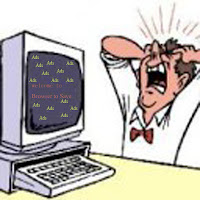What Is Adware Generic5.RQV?
 Adware Generic5.RQV is detected as an adware created to display numerous popup ads or adverting links to certain ads pages on the target system. Users may find that the system is flooded with unwanted ads most of which are prompting you to download or purchase some product. Actually such adware can record your browsing history and bombard the browser accordingly with the ads. It may leave serious side effects on the target web browser of Internet Explorer, Firefox and Google Chrome. Except by inserting extensions and plug-ins, the adware may also transform your default search page and redirect your search queries to irrelevant dubious website, among which some may be malicious too. Adware Generic5.RQV keeps track of your online activities and installs other malware on the vulnerable Window computer, steals the users' personal data and information and sends them to a remote server. Therefore users should get rid of Adware Generic5.RQV the first time around.
Adware Generic5.RQV is detected as an adware created to display numerous popup ads or adverting links to certain ads pages on the target system. Users may find that the system is flooded with unwanted ads most of which are prompting you to download or purchase some product. Actually such adware can record your browsing history and bombard the browser accordingly with the ads. It may leave serious side effects on the target web browser of Internet Explorer, Firefox and Google Chrome. Except by inserting extensions and plug-ins, the adware may also transform your default search page and redirect your search queries to irrelevant dubious website, among which some may be malicious too. Adware Generic5.RQV keeps track of your online activities and installs other malware on the vulnerable Window computer, steals the users' personal data and information and sends them to a remote server. Therefore users should get rid of Adware Generic5.RQV the first time around.
Possible Symptoms of Adware Generic5.RQV Infection
- Automatically opened new tabs which display advertisements.
- Redirects of Internet search queries to unknown web sites.
- Modified homepage which cannot change it back by resetting.
- Blocked visit to legitimate security web sites with error prompts.
- Unresponsive script error boxes asking to continue or stop.
- Crashed web browser when there is too many tabs opened.
How to Remove Adware Generic5.RQV?
Adware Generic5.RQV is commonly spread by packing with other free programs that are offered on most multimedia pages. Users should keep an eye on downloadable programs such as games, browser plug-ins or tools. If you cannot remove Adware Generic5.RQV with a security tool, we have outlined a simple to follow instructions on this page which you can follow as reference:Step 1: Restart the infected computer into safe mode with networking by pressing and holding F8 before Windows launches.
Step 2: Search for and manually delete below files:
%Documents and Settings%\All Users\Application Data\[random]\ %Documents and Settings%\All Users\Application Data\[random]\[random].exe %Documents and Settings%\All Users\Application Data\[random]\[random].mofStep 3: Navigate to remove the registry entries associated as below in Registry Editor which cannot be opened via regedit command:
HKEY_CLASSES_ROOT\PersonalSS.DocHostUIHandler HKEY_CURRENT_USER\Software\Microsoft\Internet Explorer\Download “RunInvalidSignatures” = “1″ HKEY_LOCAL_MACHINESOFTWAREClasses[trojan name]IEHelper.DNSGuardCurVer HKEY_LOCAL_MACHINESOFTWAREClasses[trojan name]IEHelper.DNSGuardCLSID HKEY_LOCAL_MACHINESOFTWAREClasses[trojan name]IEHelper.DNSGuard HKEY_LOCAL_MACHINESOFTWAREClasses[trojan name]IEHelper.DNSGuard.1 HKEY_LOCAL_MACHINESOFTWAREMicrosoftInternet ExplorerToolbar “[trojan name]”Notes: If you are still confused with above procedures, please click here to contact a 24/7 online expert for more details.

没有评论:
发表评论